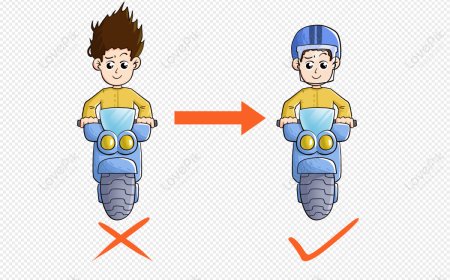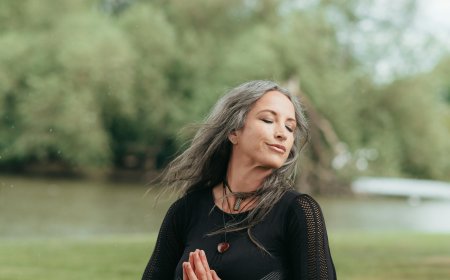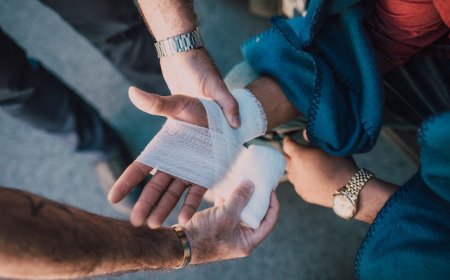Baseline Bone Health
Do you know how well your baseline bone health is from your last physical examination? If so, have you done anything to improve your bone health? You may be wondering where I am going with this, keep on reading and you will soon find out. Your baseline health numbers are an initial measurement of a...

Do you know how well your baseline bone health is from your last physical examination?
If so, have you done anything to improve your bone health?
You may be wondering where I am going with this, keep on reading and you will soon find out.
Your baseline health numbers are an initial measurement of a condition that is taken at an early time point and used for comparison over time to look for changes. For example, the size of a tumor will be measured before treatment (baseline) and then afterwards to see if the treatment had an effect. That first measurement would be your baseline measurement, but this is only an example.
Would it not make sense that if we care about the health of our bodies that we would know our average heart rate, blood pressure, cholesterol and triglyceride numbers, as well as our blood sugar levels and more.
An annual baseline physical examination is the foundation of your health maintenance. Yearly, you should visit your doctor who will conduct and coordinate a comprehensive evaluation of your current health and any previous health problems you may have had. In order to determine any future risk factors due to heredity, stress, or lifestyle, he or she will also ask you about your family, career and social history. Upon completion of the physical examination, you and your doctor should work together to develop a personal plan to maximize your health and enjoyment of life, now and in the future.
With each passing year, as we get older, become more sedentary, and become fatter, many things begin happening within our bodies which is not good. For some people, they begin to suffer the ill effects of osteopenia, which is the loss of bone mineral density (BMD) that weakens bones. It’s more common in people older than 50, especially women. Osteopenia has no signs or symptoms, but a painless screening test can measure bone strength. Certain lifestyle changes can help you preserve bone density and prevent osteoporosis.
How would you like to wake up one day to find out that you had been losing bone mineral density to the point that you now have full blown osteoporosis?
Osteopenia isn’t as severe as osteoporosis, which is a disease that weakens bones so much that they can break more easily. Not everyone with osteopenia develops osteoporosis, but it can happen. People with osteopenia should try to strengthen and protect their bones. And their healthcare providers should monitor their bone mineral density.
Osteopenia is a common condition, affecting about 34 million Americans. It’s especially common among:
- All people older than 50 years.
- People with poor nutrition.
- Women after menopause.
There are a few factors which lead to worsening osteopenia which are:
- Unhealthy lifestyle choices, such as smoking, drinking too much alcohol or caffeine, and not exercising.
- Poor nutrition, especially a diet too low in calcium or vitamin D.
- Hormonal changes during menopause.
- Medical conditions such as hyperthyroidism.
- Medications such as prednisone and some treatments for cancer, heartburn, high blood pressure and seizures.
- Surgery on the gastrointestinal system, which can affect the body’s ability to absorb needed nutrients and minerals.
You should note that going from the top of the list of things which can lead to osteopenia, the order goes from what you can control down to what you have little to no control over.
If you’re diagnosed with osteopenia, you will need regular bone density tests to monitor bone health, usually every two to three years.
Not everyone with osteopenia will develop osteoporosis. You can make changes to your lifestyle which can keep bone loss to a minimum. For those who do develop osteoporosis, some treatments can help protect and strengthen the bones. However, you should be taking action to prevent osteopenia from ever happening in the first place.
Exercise to build stronger bones!
Osteopenia can be a problem for people of any size and weight. However, if your bones are losing density, wouldn’t it only make good sense to lose weight through exercise and good nutrition to help prevent your bones from breaking easily?
It should be obvious that strong bones are the foundation for a strong body, and weak bones are not going to be of much help in supporting your body if you suffer from obesity. The more strain that you place on your weak bones, the more apt you are to find that your bones break too easily.
During childhood and puberty is when our bodies are building up our bone structure. And then it continues to be remade through adulthood, unless you begin suffering from osteopenia. Then the growth of new bone material slows down until the bones become too porous.
Check with your doctor before you begin a regular exercise program, especially if you have health conditions – such as heart trouble, high blood pressure, diabetes, or obesity – or if you are age 40 or older,
Through weight bearing exercise we can mitigate bone loss, and even make our bones stronger to support our bodies. Bones react to compression forces by growing stronger. These compressive forces are best when they are from resistance training with weights. However, walking can also be good for preventing bone loss as each step you take places your spinal column under a compressive load which stimulates bone growth. When we lift weights, we are giving our bones better stimulation for growth. The reverse is also true that if you do not place enough compressive forces upon your skeletal structure, your bones will become weak.
Resistance exercises such as lifting weights are great for bone health. However, you do not have to lift weights in order to strengthen your bones. Walking, hiking, jogging, climbing stairs, playing tennis, and dancing can also be great exercises for keeping your bones healthy.
Other exercises such as swimming and bicycling can help build and maintain strong muscles and have excellent cardiovascular benefits, but they are not the best way to exercise your bones.
If you have osteoporosis, ask your doctor which activities are safe for you.
If you have low bone mass, experts recommend that you protect your spine by avoiding exercises or activities that flex, bend, or twist it. Furthermore, you should avoid high-impact exercise to lower the risk of breaking a bone. You also might want to consult with an exercise specialist to learn the proper progression of activity, how to stretch and strengthen muscles safely, and how to correct poor posture habits.
Remember, exercise is only one part of an osteoporosis prevention or treatment program. Like a diet rich in calcium and vitamin D, exercise helps strengthen bones at any age. But proper exercise and diet may not be enough to stop bone loss caused by medical conditions, menopause, or lifestyle choices such as tobacco use and excessive alcohol consumption. It is important to speak with your doctor about your bone health. Discuss whether you might be a candidate for a bone mineral density test. If you are diagnosed with low bone mass, ask what medications might help keep your bones strong.
What's Your Reaction?



























































































